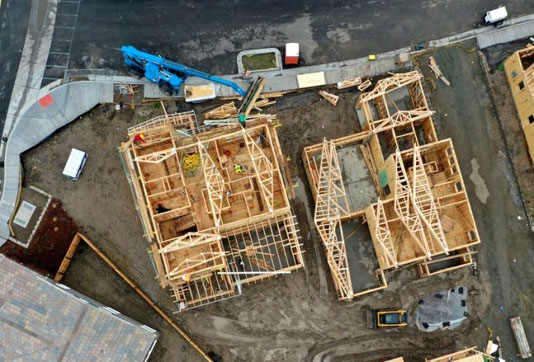WASHINGTON, July 18, 2020 (BSS/AFP) – US home construction surged 17.3 percent in June, the Commerce Department said Friday, as the sector continued to gain ground following the disruption caused by the coronavirus pandemic.
The rebound in housing starts compared to May saw the northeast — home to the worst initial outbreak of COVID-19 — spike 114.3 percent and the midwest and south also grow, though starts were down 7.5 percent in the west.
Construction was at a seasonally adjusted annual rate of 1.186 million, above analysts’ forecasts, however it was down 4.0 percent from June 2019, according to the monthly data report.
The sector had started recovering in May after a steep decline in April, the first full month of business shutdowns to stop the spread of the coronavirus.
Growth in June was seen both in single-family housing starts, which were up 17.2 percent, and in units of five or more, which rose 18.6 percent.
Permits, a sign of demand in the pipeline, grew 2.1 percent from May fueled by single-family authorizations, which rose 11.8 percent while multi-unit permits decline.
However, the number was 2.5 percent below the same month in 2019.
The data “is only a bare, partial recovery,” chief economist of the National Association of Realtors Lawrence Yun said in statement, adding that the United States needs at least 1.5 million new units to satisfy increased demand.
“The housing market is hot. Homebuyers have swiftly moved into the market to take advantage of the unimaginably low mortgage rates. But inventory is lacking with a sizable backlog of buyers getting outbid by others,” Yun said.
However Rubeela Farooqi of High Frequency Economics noted the average for both starts and permits was weaker in the first quarter than the second.
“Beyond a near-term bounce that reflects demand for more space as more and more people work from home, a desire to live in less densely populated areas as well as low mortgage rates, the outlook for housing is likely weak as job and income losses curtail activity,” she said in a note.



